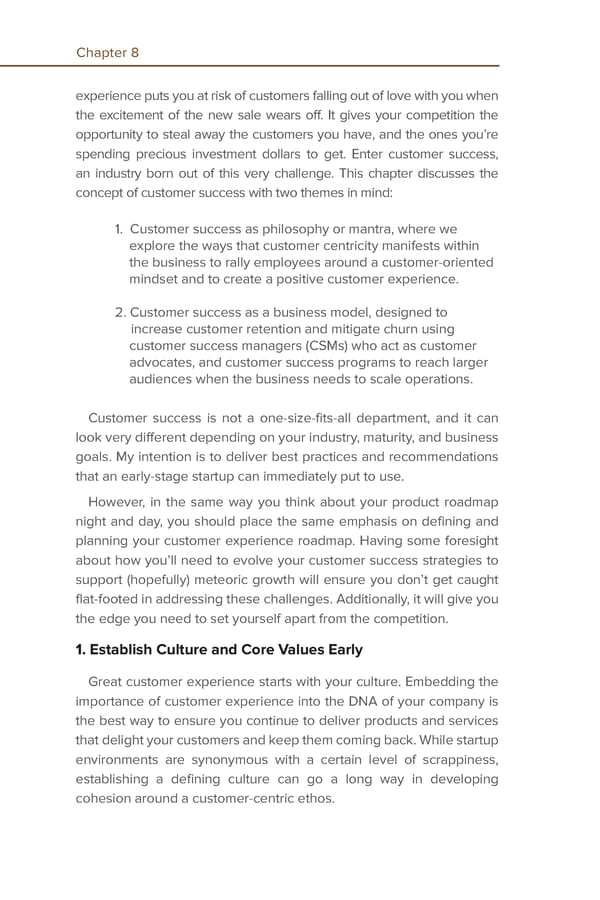Chapter 8 experience puts you at risk of customers falling out of love with you when the excitement of the new sale wears off. It gives your competition the opportunity to steal away the customers you have, and the ones you’re spending precious investment dollars to get. Enter customer success, an industry born out of this very challenge. This chapter discusses the concept of customer success with two themes in mind: 1. Customer success as philosophy or mantra, where we explore the ways that customer centricity manifests within the business to rally employees around a customer-oriented mindset and to create a positive customer experience. 2. Customer success as a business model, designed to increase customer retention and mitigate churn using customer success managers (CSMs) who act as customer advocates, and customer success programs to reach larger audiences when the business needs to scale operations. Customer success is not a one-size-fits-all department, and it can look very different depending on your industry, maturity, and business goals. My intention is to deliver best practices and recommendations that an early-stage startup can immediately put to use. However, in the same way you think about your product roadmap night and day, you should place the same emphasis on defining and planning your customer experience roadmap. Having some foresight about how you’ll need to evolve your customer success strategies to support (hopefully) meteoric growth will ensure you don’t get caught flat-footed in addressing these challenges. Additionally, it will give you the edge you need to set yourself apart from the competition. 1. Establish Culture and Core Values Early Great customer experience starts with your culture. Embedding the importance of customer experience into the DNA of your company is the best way to ensure you continue to deliver products and services that delight your customers and keep them coming back. While startup environments are synonymous with a certain level of scrappiness, establishing a defining culture can go a long way in developing cohesion around a customer-centric ethos.
 Customer Experience and Success Page 3 Page 5
Customer Experience and Success Page 3 Page 5